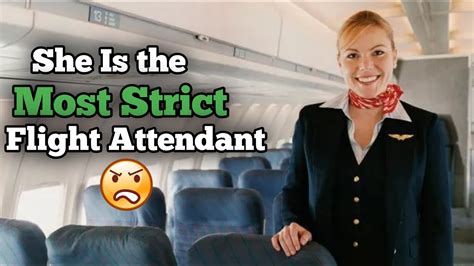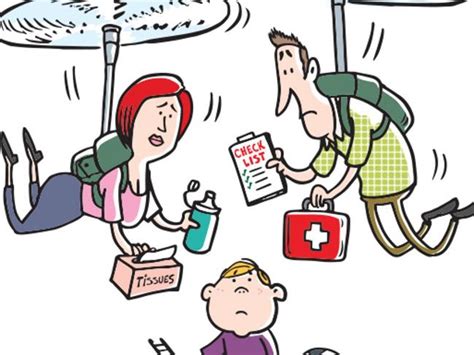
A flight attendant is warning passengers about the potential dangers of switching seats on a plane, highlighting how it can disrupt the accuracy of the flight manifest and create significant issues during emergencies, making it difficult to locate passengers and potentially delaying or hindering rescue efforts.
A veteran flight attendant is raising awareness about a little-known but potentially life-threatening consequence of swapping seats on airplanes. The seemingly innocuous act of changing seats, often done for comfort or to sit with travel companions, can create significant discrepancies between the actual location of passengers and the official flight manifest, posing serious risks during emergencies. The flight attendant, known as Cierra Mistt on TikTok, has shared her insights, warning passengers that this common practice could have dire consequences.
The primary concern revolves around the accuracy of the flight manifest, a crucial document used by flight attendants, pilots, and emergency responders in the event of an incident. This manifest lists each passenger’s assigned seat, providing a quick and reliable way to locate individuals for various reasons, including serving specific meals, assisting passengers with medical needs, and, most critically, ensuring everyone is accounted for during an emergency evacuation.
Mistt explains that when passengers switch seats without informing the flight crew, the manifest becomes inaccurate. “What happens if there’s an emergency and we need to find you, but you’re not in the seat that you’re supposed to be in?” she asks. This discrepancy can cause confusion and delays, potentially hindering rescue efforts and putting lives at risk. She emphasizes that in the chaos of an emergency, flight attendants rely heavily on the manifest to efficiently manage the situation.
The issue is further compounded by the fact that flight attendants often have limited time and resources to meticulously track every seat change during a flight. While they strive to maintain an accurate count, the sheer number of passengers and the dynamic nature of the cabin environment can make it challenging to keep up with unauthorized seat swaps.
According to Mistt, the problem isn’t just about the inconvenience of finding someone; it’s about the potential for serious delays in critical situations. “It’s not just about, ‘Oh, we need to get you your special meal.’ It’s about knowing where everybody is at all times on the flight.” In a scenario involving turbulence, a medical emergency, or an evacuation, knowing the precise location of each passenger can be the difference between a swift, effective response and a chaotic, delayed one.
The flight attendant’s warning has resonated with many travelers, prompting discussions about the importance of following protocol and the potential ramifications of seemingly harmless actions. While some passengers may view seat swapping as a minor issue, the perspective of a seasoned flight attendant highlights the critical role that accurate passenger information plays in ensuring flight safety.
To mitigate these risks, airlines and flight attendants generally advise passengers to inform a member of the flight crew before changing seats. This allows the crew to update the manifest and ensure that the accurate seating arrangement is reflected in their records. While it may seem like a minor inconvenience, taking the time to notify the flight attendant can contribute significantly to the overall safety and efficiency of the flight.
Furthermore, passengers should understand that certain seat changes may not be permissible due to safety regulations or weight distribution considerations. Flight attendants are trained to manage these factors and ensure that the aircraft remains balanced and within safe operating parameters. Unauthorized seat swaps can disrupt this balance and potentially compromise the stability of the aircraft.
Beyond the immediate safety concerns, inaccurate flight manifests can also create administrative challenges. In the event of lost luggage or other passenger-related issues, having an accurate record of each passenger’s seat assignment is crucial for resolving these matters efficiently. When passengers are not seated where they are supposed to be, it can complicate the process of tracking down belongings and addressing concerns.
The flight attendant’s warning serves as a reminder that air travel is a complex system with numerous safety protocols in place. While passengers may not always be aware of the intricacies of these protocols, understanding and adhering to them is essential for ensuring a safe and comfortable journey for everyone on board. By informing the flight crew of any seat changes and respecting their guidance, passengers can contribute to a more secure and efficient flight environment.
In addition to individual passenger responsibility, airlines also play a crucial role in addressing this issue. Some airlines are exploring technological solutions to improve the accuracy of flight manifests, such as using electronic seat maps that can be easily updated by flight attendants. Others are focusing on educating passengers about the importance of following protocol and the potential risks of unauthorized seat swaps.
Ultimately, ensuring the accuracy of the flight manifest is a shared responsibility between passengers and airlines. By working together to maintain accurate records and following established procedures, the aviation industry can continue to enhance safety and minimize risks for all travelers.
The flight attendant’s revelations also shone a light on the training that flight attendants receive to deal with in-flight emergencies. The public might not be fully aware of the amount of preparation and drills the cabin crew are put through to ensure passenger safety. A key component of this training is using the flight manifest to quickly account for passengers in the event of an emergency, particularly evacuations. They practice scenarios where time is of the essence, and the manifest is the primary tool to locate individuals requiring assistance or to confirm that everyone has safely exited the aircraft. This is why an inaccurate manifest, caused by unchecked seat swaps, can significantly hinder their ability to perform their duties effectively.
Furthermore, the flight attendant’s warning brings into focus the broader implications of passenger behavior on flight safety. While individual seat swaps might seem insignificant, collectively, they contribute to a systemic issue that compromises the reliability of safety protocols. This highlights the need for greater awareness among passengers about how their actions, even seemingly harmless ones, can have far-reaching consequences for the safety of the flight. Airlines could consider incorporating this information into their pre-flight safety briefings to better educate passengers on the importance of adhering to seating assignments and informing the crew of any changes.
Another aspect to consider is the potential impact on family seating policies. Many airlines offer options for families to sit together, often for an additional fee. When passengers swap seats without authorization, it can disrupt these arrangements and create conflicts among passengers who have paid for specific seating assignments. This underscores the importance of respecting the established seating arrangements and following the airline’s policies to ensure a fair and orderly boarding process.
Moreover, the flight attendant’s message emphasizes the importance of communication between passengers and the flight crew. Airlines promote the idea of passenger and crew cooperation for a safe and pleasant flight. By establishing a clear line of communication, passengers can quickly address any concerns or needs, and the crew can effectively manage the cabin environment and ensure everyone’s safety. When it comes to seat changes, this communication is critical for maintaining an accurate manifest and preventing any potential disruptions.
The situation also raises questions about how airlines can better enforce seating policies and ensure that passengers adhere to their assigned seats. Some airlines have implemented stricter boarding procedures, requiring passengers to show their boarding passes when entering the aircraft and verifying their seat assignments. Others are exploring technological solutions, such as using mobile apps to track passenger locations and provide real-time updates to the flight manifest. By implementing these measures, airlines can reduce the incidence of unauthorized seat swaps and improve the overall accuracy of passenger information.
In conclusion, the flight attendant’s warning about the dangers of swapping seats on airplanes serves as a valuable reminder of the importance of following safety protocols and respecting the role of the flight crew. While passengers may view seat changes as a minor issue, the potential consequences for flight safety can be significant. By informing the flight crew of any seat changes, adhering to seating assignments, and respecting the airline’s policies, passengers can contribute to a safer and more efficient flight environment for everyone on board. It is also important to note that airlines have a duty to ensure the safety of their passengers, and they should implement measures to prevent and address unauthorized seat swaps. The flight attendant’s message emphasizes the importance of communication, cooperation, and awareness in ensuring the safety and comfort of air travel.
Expanded Analysis and Context
To further understand the potential impact of unauthorized seat swapping, it is important to consider the various emergency scenarios that can occur on an airplane and how an inaccurate flight manifest can complicate the response.
Emergency Evacuations: In the event of a fire, a sudden loss of cabin pressure, or other critical situations requiring immediate evacuation, flight attendants rely on the flight manifest to ensure that all passengers are safely off the aircraft. They use the manifest to quickly identify passengers who may require assistance, such as those with disabilities or mobility issues, and to account for everyone after the evacuation is complete. If passengers have swapped seats without informing the crew, the manifest will be inaccurate, making it difficult to locate these individuals and potentially delaying the evacuation process. This delay could have life-threatening consequences, especially in situations where time is of the essence.
Medical Emergencies: Medical emergencies can occur at any time during a flight. If a passenger experiences a heart attack, stroke, or other serious medical condition, flight attendants need to quickly locate medical professionals on board who can provide assistance. The flight manifest can be used to identify passengers who have indicated medical training or expertise on their booking information. However, if passengers have swapped seats, the manifest may not accurately reflect the location of these medical professionals, potentially delaying access to critical medical care.
Turbulence: Severe turbulence can cause injuries to passengers and crew members if they are not properly secured. Flight attendants are trained to assess the situation and instruct passengers to fasten their seatbelts. If passengers have swapped seats and are not in their assigned locations, it can be difficult for the crew to quickly locate and assist those who may need help. Additionally, unauthorized seat swaps can disrupt the weight distribution of the aircraft, potentially making it more susceptible to the effects of turbulence.
Security Threats: In the event of a security threat, such as a bomb threat or a potential hijacking, flight attendants need to quickly identify and assess the situation. The flight manifest can be used to identify passengers who may be considered high-risk or who have raised suspicion. However, if passengers have swapped seats, the manifest may not accurately reflect the location of these individuals, potentially hindering the crew’s ability to respond effectively to the threat.
Lost or Missing Passengers: After a flight has landed, it is important to ensure that all passengers have disembarked safely. If a passenger is reported missing, flight attendants will use the flight manifest to determine their last known location and to conduct a search of the aircraft. If passengers have swapped seats, the manifest may not accurately reflect the missing passenger’s location, making it more difficult to find them.
Weight and Balance Considerations
Aircraft are designed to operate within specific weight and balance parameters. These parameters are crucial for maintaining the stability and control of the aircraft during flight. Flight attendants are trained to manage weight distribution within the cabin, ensuring that the aircraft remains balanced and within safe operating limits. Unauthorized seat swaps can disrupt this balance and potentially compromise the stability of the aircraft, particularly on smaller aircraft or those with unconventional seating configurations.
For instance, if a large group of passengers were to suddenly move to one side of the aircraft, it could shift the center of gravity and affect the aircraft’s handling characteristics. This is especially critical during takeoff and landing, when precise control is essential. While modern aircraft are equipped with sophisticated systems to compensate for minor weight imbalances, unauthorized seat swaps can exacerbate these imbalances and potentially create a more challenging situation for the pilots.
Furthermore, airlines often assign specific seating arrangements based on passenger weight and other factors. For example, passengers who require the use of supplemental oxygen may be assigned seats near oxygen outlets. Unauthorized seat swaps can disrupt these arrangements and potentially compromise the availability of necessary medical equipment.
Technological Solutions and Future Trends
Airlines are increasingly exploring technological solutions to improve the accuracy of flight manifests and address the issue of unauthorized seat swaps. Some of these solutions include:
- Electronic Seat Maps: Electronic seat maps allow flight attendants to easily update passenger seating information in real-time. These maps can be accessed on tablets or other mobile devices, providing a visual representation of the cabin and allowing flight attendants to quickly identify any discrepancies between the manifest and the actual seating arrangement.
- Mobile Apps: Mobile apps can be used to track passenger locations and provide real-time updates to the flight manifest. Passengers can use the app to check in for their flight, select their seats, and notify the flight crew of any seat changes. The app can also be used to provide passengers with important information, such as gate assignments, boarding times, and safety instructions.
- Biometric Identification: Biometric identification technologies, such as facial recognition and fingerprint scanning, can be used to verify passenger identities and ensure that they are seated in their assigned locations. These technologies can also be used to track passenger movements throughout the airport and on the aircraft, providing a more accurate and comprehensive picture of passenger activity.
- Artificial Intelligence: Artificial intelligence (AI) can be used to analyze passenger data and identify patterns of unauthorized seat swaps. This information can be used to develop strategies for preventing these swaps and improving the accuracy of flight manifests. AI can also be used to optimize seating assignments and weight distribution, ensuring that the aircraft remains balanced and within safe operating limits.
These technological solutions have the potential to significantly improve the accuracy of flight manifests and reduce the risks associated with unauthorized seat swaps. However, it is important to note that these technologies are not a substitute for human vigilance and communication. Flight attendants will still need to play a critical role in monitoring passenger behavior and ensuring that seating policies are followed.
Conclusion
The flight attendant’s warning about the dangers of swapping seats on airplanes serves as a valuable reminder of the importance of following safety protocols and respecting the role of the flight crew. While passengers may view seat changes as a minor issue, the potential consequences for flight safety can be significant. By informing the flight crew of any seat changes, adhering to seating assignments, and respecting the airline’s policies, passengers can contribute to a safer and more efficient flight environment for everyone on board. It is also important to note that airlines have a duty to ensure the safety of their passengers, and they should implement measures to prevent and address unauthorized seat swaps. The flight attendant’s message emphasizes the importance of communication, cooperation, and awareness in ensuring the safety and comfort of air travel. The convergence of passenger responsibility, airline policy, and technological advancement will continue to shape the future of flight safety.
Frequently Asked Questions (FAQ)
1. Why is it dangerous to switch seats on a plane without informing the flight attendant?
Switching seats without informing the flight attendant can lead to an inaccurate flight manifest. This manifest is crucial for identifying passengers during emergencies, such as evacuations or medical situations. If the manifest is incorrect, it can delay rescue efforts and potentially endanger lives. As Cierra Mistt, the flight attendant who raised the issue, stated, it’s not just about “getting you your special meal” but about “knowing where everybody is at all times on the flight.” An inaccurate manifest complicates this crucial task.
2. What is a flight manifest, and why is it so important?
A flight manifest is an official document listing all passengers on a flight, along with their assigned seats. It includes other relevant information, such as special needs or medical conditions. In emergency situations, flight attendants, pilots, and emergency responders use this document to quickly locate passengers, assist those who need help, and ensure everyone is accounted for after an evacuation. The manifest is a vital tool for maintaining order and safety in critical situations.
3. What should I do if I want to change seats on a flight?
If you wish to change seats, always ask a flight attendant for permission first. They can assess whether the change is permissible, considering factors like weight distribution and safety regulations. If approved, the flight attendant will update the manifest to reflect the change, ensuring accurate passenger tracking.
4. Can unauthorized seat swapping affect the balance of the aircraft?
Yes, unauthorized seat swapping can affect the weight distribution of the aircraft, particularly on smaller planes or those with unusual seating configurations. Aircraft are designed to operate within specific weight and balance parameters for stability and control. A sudden shift in passenger weight can disrupt this balance, potentially affecting the aircraft’s handling, especially during takeoff and landing.
5. Are airlines doing anything to address the issue of unauthorized seat swapping?
Yes, some airlines are exploring technological solutions to improve the accuracy of flight manifests. These include electronic seat maps that flight attendants can update in real-time, mobile apps for passengers to manage seating, and biometric identification systems to verify passenger identities. Additionally, airlines are focusing on educating passengers about the importance of following seating policies and informing the crew of any changes.









